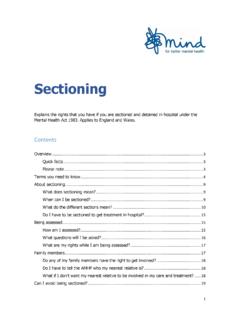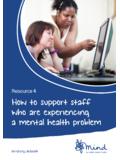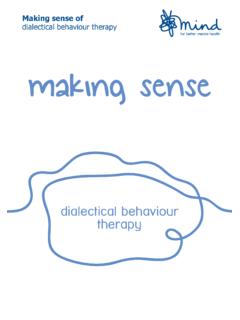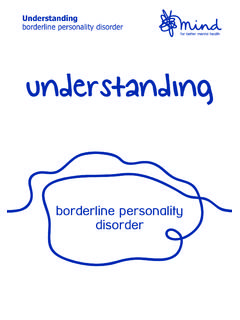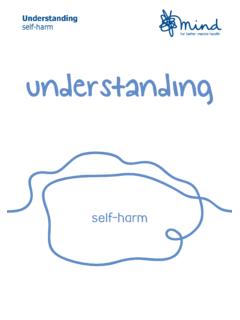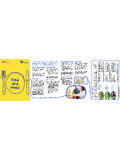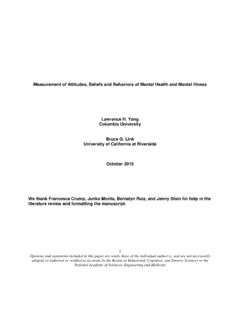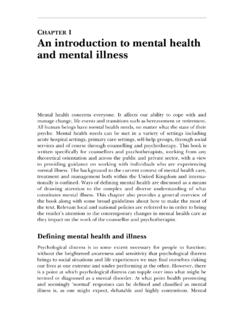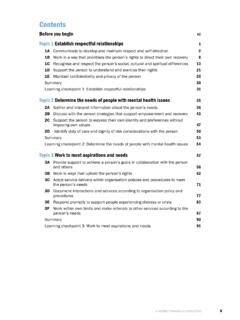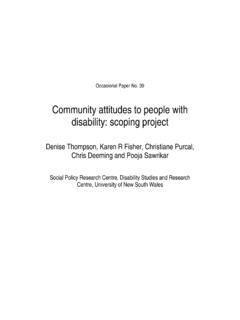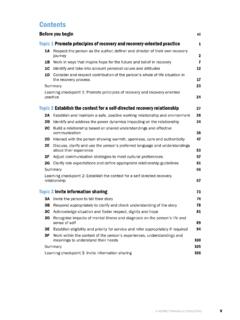Transcription of Attitudes to Mental Illness 2014 - Home | Mind, the mental ...
1 Attitudes to Mental Illness 2014 Technical Annexes Prepared for Time to Change March 2015. TNS BMRB. JN127266. Contents 1. Appendix Survey methodology 3. 2. Appendix Questionnaire 10. Attitudes to Mental Illness TNS BMRB 2015 2. 1. Appendix Survey methodology Population The Attitudes to Mental Illness surveys have been carried out in England as part of TNS's Omnibus survey. The Omnibus survey aims to cover adults aged 16+, living in private households. This report relates to the 2014 survey, although the methodology followed was the same for the earlier surveys. Interview mode Interviews were carried out by face-to-face interviewing in-home, using Computer Assisted Personal Interviewing (CAPI).
2 Sample selection Sample frame The TNS Omnibus is carried out using a quota sample, with sample points selected by a random location methodology. The sample points were selected from those determined by TNS's own sampling system. 2001 Census small area statistics and the Postcode Address File (PAF) were used to define sample points. The sample points are areas of similar population sizes formed by the combination of electoral Wards, with the constraint that each sample point must be contained within a single Government Office Region (GOR). Geographic systems were used to minimise the travelling time that would be needed by an interviewer to cover each area.
3 TNS have defined 600 points south of the Caledonian Canal in Great Britain. Selection of sampling points 278 TNS sample points were selected south of the Caledonian Canal for use by the Omnibus, after stratification by GOR and Social Grade. Sample points were checked to ensure that they are representative by an urban and rural classification. These points were divided into two replicates, and each set of points is used in alternative weeks of Omnibus fieldwork. Sequential waves of fieldwork are issued systematically across the sampling frame to provide maximum geographical dispersion. For this survey, 176 sampling points were selected in England.
4 Selection of clusters within sampling points All the sample points in the sampling frame have been divided into two geographically distinct segments each containing, as far as possible, equal populations. The segments comprise aggregations of complete wards. For the Omnibus, alternate A and B halves are worked each wave of fieldwork. Each week different wards are selected in the required half and Census Output Areas selected Attitudes to Mental Illness TNS BMRB 2015 3. within those wards. Then, blocks containing an average of 150 addresses are sampled from PAF in the selected Output Areas, and are issued to interviewers.
5 Interviewing and quota controls Assignments are conducted over two days of fieldwork and are carried out on weekdays from 2pm-8pm and at the weekend. Quotas are set by sex (male, female housewife', female non- housewife', where a housewife/househusband' is the person (male or female) responsible for carrying out more than half of the weekly shopping); within female housewife', presence of children and working status, and within men, working status, to ensure a balanced sample of adults within contacted addresses. Interviewers are instructed to leave 3 doors between each successful interview. Response rates As this is a quota sample it is not possible to quote response rates for achieved interviews.
6 Approximately 13 interviews were achieved on average per sample point. Fieldwork Interviews were carried out by fully trained interviewers from TNS's field department. Interviewing took place between December 3rd and December 7th 2014. inclusive. The questionnaire The Attitudes to Mental Illness questionnaire was developed by the Department of Health for this series of surveys, based on previous research in Toronto, Canada and the West Midlands, UK. It included 26 items based on the 40-item Community Attitudes toward the Mentally Ill (CAMI) scale 1 and the Opinions about Mental Illness scale2, and an added item on employment-related Attitudes .
7 The questions covered a wide range of issues, from Attitudes towards people with Mental Illness , to opinions on services provided for people with Mental health problems. There have been minor changes to the questionnaire over the course of the surveys, but the core has remained the same. Some new questions were added in 2009 and 2010 to tie in with the evaluation of the Time to Change' anti-discrimination campaign, by the Institute of Psychiatry. The 2014 questionnaire consisted of: 27 attitude statements using a five-point Likert scale (Agree strongly/Agree slightly/Neither agree nor disagree/Disagree slightly/Disagree strongly), covering a wide range of issues including Attitudes towards people with Mental Illness , to opinions on services provided for people with Mental health problems.
8 Descriptions of people with Mental Illness . Relationships with people with Mental health problems. Attitudes towards people with Mental health problems. Types of Mental Illness . 1 Taylor SM, Dear MJ, Scaling community Attitudes toward the mentally ill', Schizophr Bull 1981, 7: 225-40. 2 Cohen J, Struening EL, Opinions about Mental Illness in the personnel of two large Mental hospitals', J. Abnorm Soc Psychol 1962, 64: 349-60. Attitudes to Mental Illness TNS BMRB 2015 4. Personal experience of Mental Illness . Proportions of people who may have a Mental health problem. Likelihood of going to a GP with a Mental health problem.
9 Talking to friends and family about a Mental health problem. Talking to employers about a Mental health problem. Perceptions of Mental health-related stigma and discrimination. Awareness of Mental health advertising Whether employee or self-employed. In addition a range of demographic measures are included on the Omnibus: Sex Age Social Grade, using the Market Research Society's classification system (AB/C1/C2/DE), based on the occupation of the Highest Income Householder (chief income earner). A description of the social grades is as follows: AB professional/managerial occupations C1 other non-manual occupations C2 skilled manual occupations DE semi-/unskilled manual occupations and people dependent on state benefits Marital status Presence of children aged under 16 in the household Ethnicity of respondent (White British, White Irish, Any other white background, Mixed white & Black Caribbean, Mixed white & Black African, Mixed white &.)
10 Asian, Other mixed background, Indian, Pakistani, Bangladeshi, Other Asian background, Black Caribbean, Black African, Other Black background, Chinese, Other). Government Office Region (North East, North West, Yorkshire and Humberside, East Midlands, West Midlands, East of England, London, South East, South West). Working status. A copy of the 2013 survey questionnaire is included in Section 2. Validation, editing and imputation As the interviews are carried out using CAPI, validation is carried out at the point of interview. The CAPI program ensures that the correct questionnaire routing is followed, and checks for valid ranges on numerical variables such as age.

